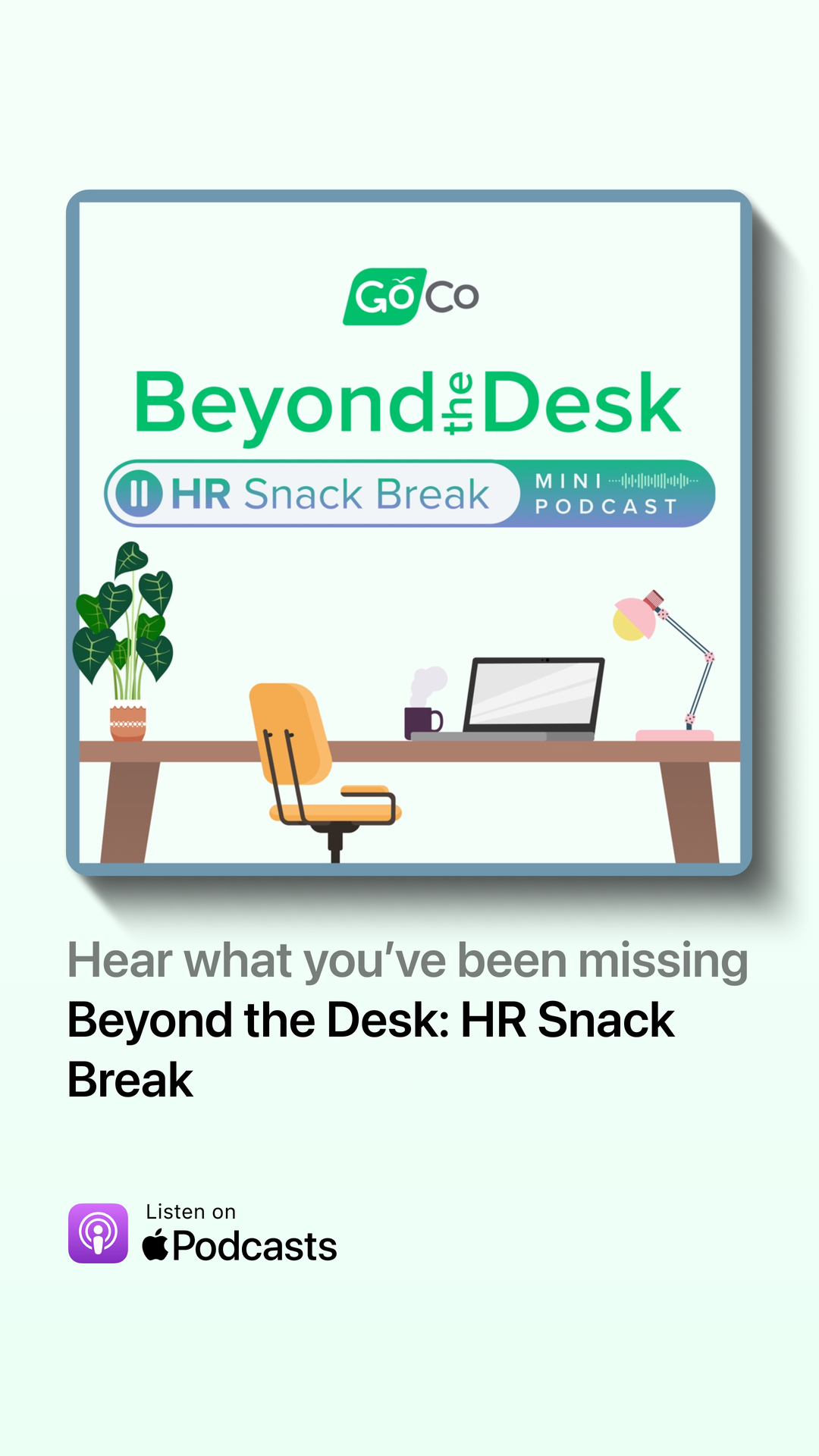HR's Guide to Sexual Harassment Prevention
How HR can improve prevention efforts and stay in compliance
by Aimie Ye - May 24th, 2021
Though more than 98% of organizations in the United States have a sexual harassment policy in place, sexual harassment remains prevalent in the workplace. Why? There are many reasons -- for some businesses, policies are in place with zero enforcement or updates, and for others, there’s little to no education, training or leadership involvement around appropriate conduct.
From an HR perspective, properly enforced sexual harassment policies, training programs, and awareness efforts ensure that your team members stay safe. At the same time, employees may find themselves in situations where it may be unclear what is considered appropriate. What does sexual harassment prevention look like in today’s world?
How can HR improve prevention efforts and stay in compliance? This guide serves as a resource for HR professionals to navigate the ins and outs of sexual harassment prevention, training, and workflow automation to help actively prevent sexual harassment
from happening.
What is Sexual Harassment?
Sexual harassment in the workplace is defined as any unwelcome sexual advances, requests of sexual favors, and any additional verbal or physical conduct of a sexual nature that creates an uncomfortable, offensive, or hostile environment.
As the EEOC outlines, there are two main types of sexual harassment: Quid pro quo harassment and hostile work environment :
Quid pro quo harassment happens when a manager’s demand/request for sexual conduct results in job changes, improvement or actions.
Hostile work environment, on the other hand, happens when a team member is subject to unwelcome forms of physical or verbal conduct that is sexual in nature -- so much so that their work environment becomes abusive and their working conditions are negatively impacted.
Types of Inappropriate Conduct
In a work environment, sexual harassment comes in many different forms, including:
The use of derogatory comments, jokes, or slurs
Verbal sexual advances or suggestions
Graphic verbal comments about an employee’s body, sexually degrading descriptions, inappropriate notes or invitations
Asking an employee about their sex life
Giving unwanted gifts of a sexual or romantic nature
Repeated physical contact or unwanted touching
Sexual contact to remain employed
Making sexual gestures, showing suggestive pictures or objects
Threatening someone after a negative response to sexual advances
Turning work discussions into sexual topics
Whistling at someone/catcalls
Abuse of power, like threatening to demote or fire someone, or withholding advancement opportunities if they don’t comply with sexual advances
There are many different types of conduct in the workplace that are absolutely unacceptable and inappropriate. It’s important to also remember that sexist comments and inappropriate conduct by clients or non-employees are also forms of sexual harassment.
On top of that, sexual harassment knows no gender, so HR must remain alert when it comes to identifying red flags.
Liability
In addition to sexual harassment prevention keeping your employees safe, it’s also important to regulate training and programs for legal reasons. Employers and HR managers are usually held responsible when cases of sexual harassment surface (though specific regulations depend on your location). Thus, keeping your work environment safe will also help you stay in compliance with guidelines. Some best practices HR should follow include:
Taking the proper steps to prevent sexual harassment from occurring in the workplace.
Developing a clear written policy defining harassment in its forms, explaining the zero tolerance policy, how to report harassment, and ensuring that every employee reads and acknowledges the policy.
Displaying regulations and posters about sexual harassment around the workplace.
Providing the proper education for employees around sexual harassment, including its illegality, definitions, complaint reporting process, and protections.
Providing employees with a formal channel or public workflow for lodging complaints and opening an investigation
Taking prompt and effective remedial action to prevent from retaliation, and sexual harassment from occurring again.
Investigating complaints thoroughly. HR managers should treat each complaint or report seriously, and document who was questioned, when, where, others present, and so on.
Taking action once a conclusion has been reached. Employers and HR should document the steps taken to reach their conclusion, and take the necessary steps after, whether it be termination of the harasser, a formal warning, suspension, or that the investigation did not justify the finding.
As an HR professional, taking these steps can put the company in a better position in case of any legal action for harassment, and
also better support the safety of your employees.
Best Practices for Sexual Harassment Prevention
Implement sexual harassment training
As we mentioned above, though most employers have some form of policy in place, having a structured sexual harassment training program can better educate your team on the importance of prevention, and teach them to apply the learnings in a work environment. It’s important to remember that an HR manager can put a program in place, but everyone on the team must be knowledgeable for a prevention plan to work.
1. Create or find a certified online sexual harassment training program.
A strong training program should follow state guidelines, and serve both employers and supervisors. Digital training helps employees understand what counts as sexual harassment, relevant legislation around harassment, company policies, and more. If you’re looking for a standalone training program, software like EasyLlama, Inspired eLearning, and ProProfs may be a good option.
If you’re looking for a way to consolidate training with your other HR processes, an all-in-one HRIS will help streamline the process. NOTE: Be sure that your training program has 100% guaranteed court acceptance. If a sexual harassment complaint reaches court, the supreme court will decide whether the business is liable -- thus a training program that meets the standards will prevent additional trouble.
2. Use concrete examples and images within your training program.
With specific examples, videos, and illustrations, your team members can focus on the point of the content, and you can customize this to fit your company culture. Examples and illustrations should be updated regularly with new regulations.
3. Make sure that your training program is accessible to all and easy-to-use.
A strong online sexual harassment program should be easy for employees of all experience levels and technical knowledge to complete. Is the training accessible by computer, phone and tablet? Is the program self-serve? Can employees complete it on their own time?
4. Set a frequency for training.
With everything on your plate, no one knows better than HR how easy it is to forget information without reinforcement. Because of this, it’s crucial to remember that sexual harassment training isn’t a “one and done” situation. Every workplace should conduct sexual harassment training at least once a year for all team members. Managers should partake in separate training sessions to learn how to properly handle complaints or conduct.
5. Make sure the training fits your company environment and voice.
Every industry and business differs, and so should the respective sexual harassment training. What might make sense for an industrial business may not for a SaaS company. Employees will more likely absorb the information if they can relate to the program materials used.
Have a complaint procedure in place
In addition to implementing annual training, HR should also take the charge in implementing a complaint procedure or an official workflow. A clear, anonymous complaint process for harassment or discrimination will encourage employees to speak up and report any unwanted or inappropriate behavior. A complaint procedure should be familiar to all employees and supervisors, and you should be sure to:
Designate a person or department for receiving complaints -- in many cases, this is the HR department
Designate a person or department for investigating complaints. The party must be unbiased towards both parties
Inform the complainant of their rights
Completely investigate the claim and determine what happened
Document every step from complaint to conclusion
Take immediate remedial action if sexual harassment is present
We cannot stress how important it is to have a clear complaint process in place. Having a streamlined workflow within your HRIS can keep the process consistent, collect important data, and make sure nothing falls through the cracks.
Stay Aware
HR & management should constantly be aware of what’s going on throughout the organization. The only way to ensure that sexual harassment doesn’t continuously occur down the line is to be accessible and approachable and to let your team members know you’re monitoring their behavior.
On one hand, opening the lines of communication and remaining approachable lets your employees know that if something inappropriate is happening, they can come to you and trust that you’ll take action. On the other hand, staying involved lets your employees know that you will be keeping tabs if any signs of misconduct are present. HR plays a crucial role in continuously identifying misconduct and calling out verbal harassment and staying accessible and familiar will help keep the workplace safe.
Keep handbooks and documents up to date
As legislation changes, so should your employee handbook and sexual harassment policies. In accordance with EEOC regulations on sexual harassment, your employee handbook should reflect new updates, and employees must be kept in the loop.
Modern HR software like GoCo makes it easy to update core policies and documents digitally, so employees can review and acknowledge documents and updates online.
How to Streamline Sexual Harassment Prevention with an HRIS
Once you’ve outlined a core sexual harassment prevention strategy, you may be wondering how to streamline and automate the process. Using
modern HR software like GoCo can help HR professionals save time on implementing a program, while enforcing it for all employees.
Create a Custom Sexual Harassment Training Workflow
With GoCo, HR managers are able to turn manual sexual harassment training processes into an automated workflow for employees to complete. Employees can complete sexual harassment training, sign new policy acknowledgements, answer questionnaires, and save their completed data all within the HRIS! The process can be made custom to your existing sexual harassment training program. Here’s how:
1. Start a workflow template for your new sexual harassment training process.
2. Outline all of the steps in the checklist you’d like to streamline (i.e. collect employee information, sexual harassment definition training, workplace harassment location training, supervisor responsibilities, etc.)
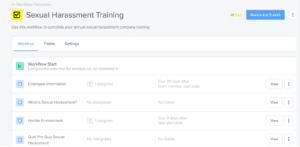
3. Create custom fields for collection of employee information
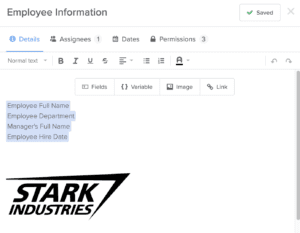
4. Add modules and due dates for each training topic, like What is Sexual Harassment, Sex Stereotyping, Retaliation, and more
Easily link to any relevant external resources, like PowerPoint or Google Slides presentations
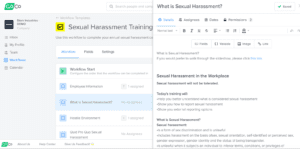
Add training content and mandatory questions within each module for employees to complete (Customize with drop-down or long-text answers)
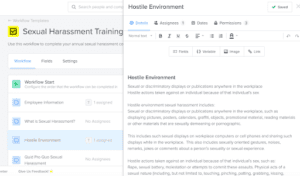
Include additional protections, remedies, and compliance information
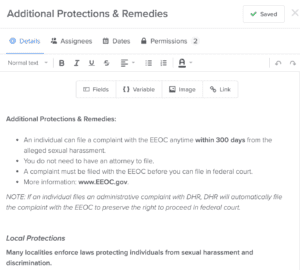
Include a summary of the training program with links to your complaint submission procedure, and additional resources
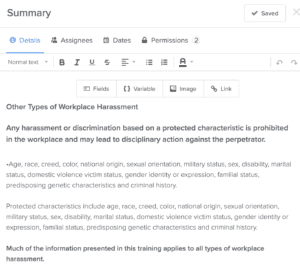
5. Make the workflow annual, semi-annual, or add custom dates so that the process will renew for employees when it is time to perform training again. You can assign managers to the task so they are reminded when the time comes.
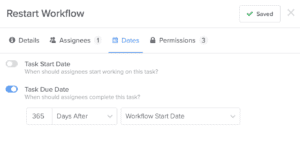
6. Start the workflow! All employees that are assigned to the workflow will be notified via email of their outstanding tasks and due dates, and they can begin sexual harassment training within the GoCo platform.
Anonymous Complaint Procedures
At GoCo’s recent DEI Hackathon, our team developed a solution for anyone -- whether an employee, customer, or witness, to report harassment while staying completely anonymous. Here’s how:
1. Start an anonymous workflow template
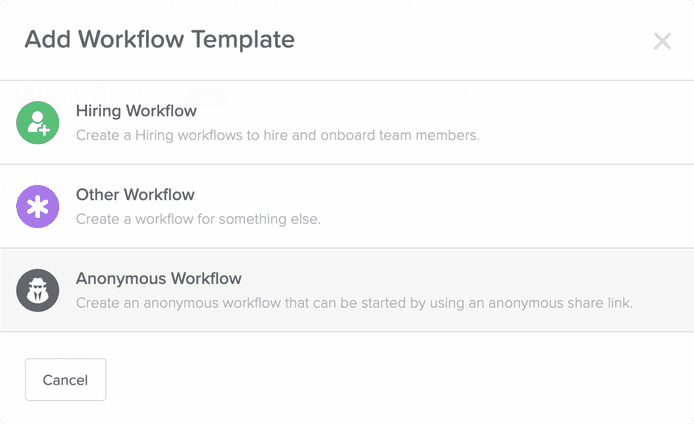
2. Name it, describe its purpose, add custom icons, and create the new workflow
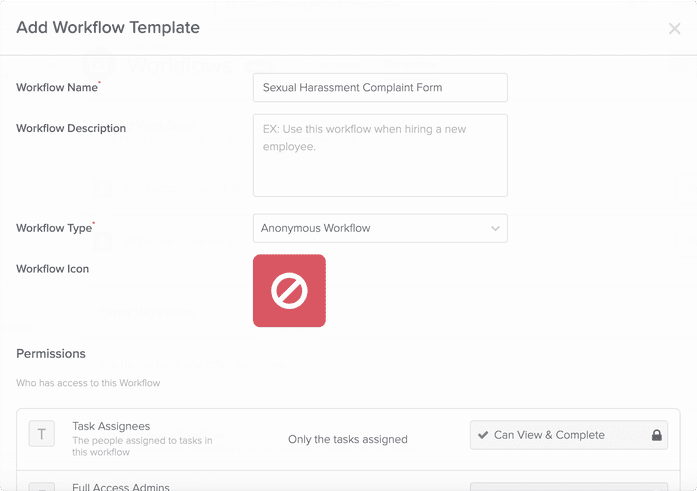
3. Add custom fields for questions and feedback around sexual harassment (or anything else)
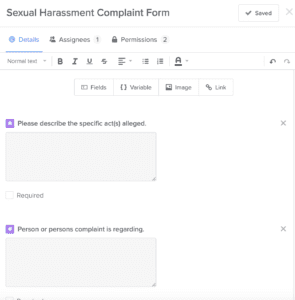
4. Assign feedback to specific team members for review (i.e. HR, department heads, etc.) Remember, the feedback is anonymous!
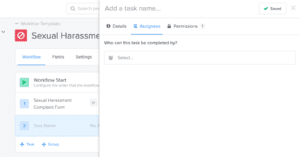
5. Publish your workflow and generate an anonymous share link (place the link wherever you’d like, whether it’s an email or on your website)

6. Anyone with the link can begin the anonymous feedback or complaint procedure and HR can use this information to investigate sexual harassment complaints.
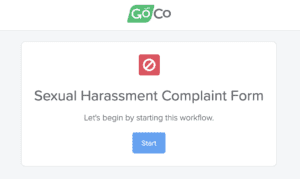
Conclusion
Though sexual harassment continues to raise concerns about employee safety in the modern workplace, HR can play a major role in prevention. Whether it’s implementing updated harassment training procedures, adding an anonymous complaint process, or simply staying in the loop on what’s going on within the organization, HR professionals can help call out inappropriate conduct and ensure the proper disciplinary measures are taken. With digital HR software like GoCo, employers can streamline sexual harassment training for all team members, which in turn helps:
Enforce training for everyone and make it required
Digitize a previously confusing process and make it easier for employees to complete
Improve access to data collected within training, as well as access to anonymous feedback for improvement.
If you’re ready to streamline your training workflows, take a free interactive tour
today.

Subscribe to Beyond The Desk to get insights, important dates, and a healthy dose of HR fun straight to your inbox.
Subscribe hereRecommended Posts
What is a W-4 Form? How to Fill it Out & 2024 Changes
Blog Articles
Search...
Product
GoCo
Resources
Articles
eBooks
Webinars
Customer Stories

